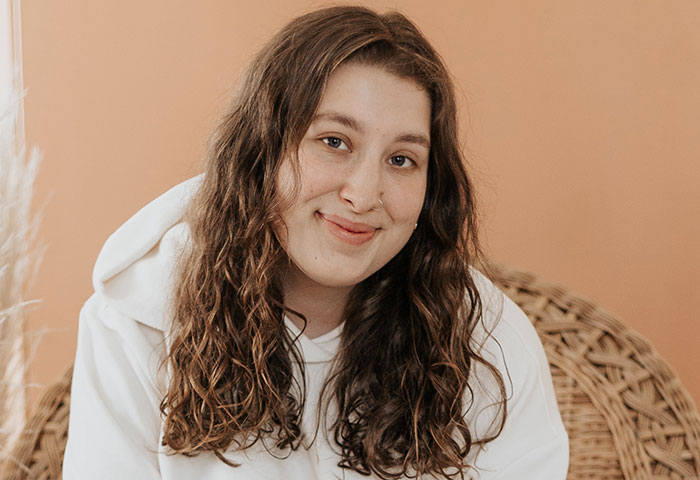
Photo by Madrona Rose on Unsplash
This hair washing regime is popping up all over the place at the moment. Read on to find out why people are switching around their product order and what benefits it can have for your hair.
What is reverse washing?
Reverse washing is simpler than it sounds. You basically switch up your shampoo and conditioner order when washing. So, for example, if you use a deep conditioner, apply this first, then use a shampoo or low-poo to remove it. If you only use conditioner, then apply this first and then wash out.
Why do curlies reverse wash?
Sometimes, your curls need the benefit of a deep conditioner, but it can leave your hair limp and flat. As the trend for voluminous, light curls is growing, people want to avoid that flat, limp look. Switching up your conditioning regime can do the trick.
Conditioner can be lipophilic, which means it coats the hair strands and also the scalp if you apply it too closely. Simply rinsing conditioner off is sometimes not enough to remove the coating. You want to be able to allow your hair to benefit from the hydration and nutrition of the conditioner but not leave any heavy residue or build-up. Reversing the order of your products can allow curls to absorb the goodness but return to their light bounciness afterwards.
How to reverse wash curls
1. Rinse with warm water
Firstly, make sure you’ve thoroughly rinsed your hair with warm water. As well as allowing the hair cuticles to open and thus absorb more conditioner, it will also encourage any water-soluble products already on your hair to be rinsed off, allowing the conditioner better access to the hair shaft.
2. Massage the scalp
Secondly, we recommend gently massaging the scalp to loosen any build-up and skin particles and rinse again.
3. Condition
Next apply your deep conditioner/ conditioner from the root and comb or rake through with your fingers to the ends of the hair. Allow the conditioner to be absorbed for at least five minutes. Don’t forget, you won’t have washed off any stubborn hair products using shampoo first so the conditioner may need to work harder to be absorbed into the hair shaft.
4. Shampoo
Finally, use a gentle shampoo or low-poo to massage and wash out the conditioner, paying particular attention to the scalp if you are trying to achieve a voluminous lift at the root. We recommend applying shampoo with a scalp massager as this can be gentler than your fingers and nails. Only massage shampoo into the scalp area and allow it to run down the lengths of the hair to rinse out the conditioner. Never rub the shampoo into the lengths as this can cause damage and frizz. Seeing as you won’t be applying conditioner after this stage to combat this, you want to be really careful at this stage.
Can you use a co-wash?
Co-washing may not be enough to remove the conditioner and may even just add to the conditioning of the hair. If you are aiming for lighter, fuller hair, then adding a co-wash on top of a deep conditioner is probably not going to work!
Who can benefit from reverse washing?
This regime is perfect for people with fine, oily, or thinning hair which gets easily weighed down. It can also benefit people with very long hair which may already be pulled down by the weight. This routine will also help people who suffer from build-up on their scalp and flakiness or psoriasis. Ensuring products are properly washed off will allow the scalp to breathe, thus allowing healthy hair to flourish.
What are the benefits?
The first obvious pro is that by preventing your curls form being weighed down, you could achieve more voluminous curls, bouncy curls. In the days following up washday, when curls naturally acquire more moisture, dirt and oils from the scalp, hair products and the world around us, this could prevent it from becoming even more limp or greasy. Secondly, not only will you be allowing your scalp to breathe, but also the skin along your jawline and back. Left over conditioner can cause acne in these areas. Limiting the amount of product on your hair could ease this if it’s something you suffer with.
Are there any cons to reverse washing?
People with coarser or drier hair may not see the same benefits with this method as you probably need to leave some conditioner on your hair to help smooth the cuticles after washing. Shampoos are formulated with a higher pH balance which raises the cuticle, and the conditioner usually balances the pH.
In order to avoid leaving your cuticle in a raised state you could try deep conditioning first, then follow up with a shampoo and finally apply a lighter conditioner to finish off. In other words, more of a mid-reverse wash. You can learn more about the pH levels of shampoos and conditioners and how they affect your reverse washing routine here.
Other people this may not work for are those who like to properly clarify their hair with a sulfate shampoo or by using other strong cleansing agents. You may find that you need the benefit of conditioning after the shampoo to rehydrate the hair. We suggest trying it out, once every couple of washes to see what works best for you.
You may not have known this term, but have you tried washing your hair in this order?
